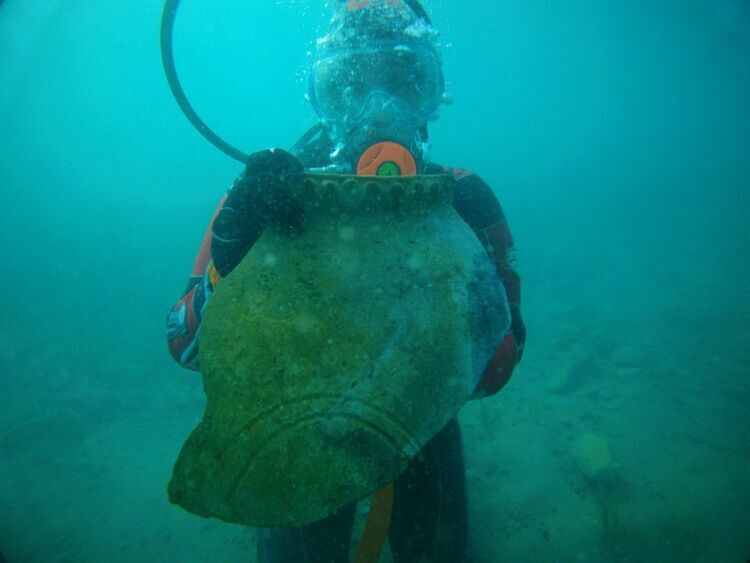In the autumn of 2025, an international underwater archaeological expedition took place on the northwestern shore of Issyk-Kul Lake, organized by the Russian Geographical Society (RGS), the Institute of Archaeology of the Russian Academy of Sciences, and the Institute of History, Archaeology and Ethnology of the National Academy of Sciences of Kyrgyzstan. Asia24.media reports citing rgo.ru.
Researchers explored the submerged complex Toru-Aigyr, which once served as an important stop for merchants and travelers along the Great Silk Road. They discovered parts of a medieval cemetery, large ceramic artifacts, and structures made of fired bricks, confirming the existence of an ancient city beneath the lake.
Archaeologists examined four underwater sites at depths ranging from one to four meters. At the first location, they uncovered fired-brick structures—the remains of ruined buildings, including a stone millstone used for grain processing. They also found an architectural fragment suggesting the presence of a public building with decorative elements, possibly a mosque or madrasa. Nearby were collapsed stone and wooden constructions. Samples have been sent for dendrochronological analysis and AMS dating to determine their age.
According to experts, the site represents a city or large trade settlement located on a key section of the Silk Road. In the early 15th century, a powerful earthquake caused the city to sink underwater. Scientists believe that residents had already abandoned their homes by that time, making the disaster similar to the tragedy of Pompeii. The area was later inhabited by nomadic peoples, marking the disappearance of a once-thriving medieval civilization.
At the second site, archaeologists discovered a Muslim necropolis dating back to the 13th—14th centuries, which had been partially eroded by water. Covering an area of 300 by 200 meters, the burial ground contained graves aligned according to Islamic rites, with skeletons positioned toward the Kaaba in Mecca. The remains of a man and a woman were recovered and will be further studied by anthropologists.
At the third site, located south of the main complex, the team found medieval ceramics and an intact khum (large storage vessel). However, the artifact could not be retrieved this season as it was deeply embedded in the lakebed.
Using modern technology and underwater drones, researchers precisely mapped the discoveries and created a database for future monitoring of the site’s condition. The expedition, conducted in collaboration with the National Academy of Sciences of Kyrgyzstan, will form the basis for future scientific publications and preservation initiatives aimed at protecting the underwater cultural heritage of Issyk-Kul Lake.







